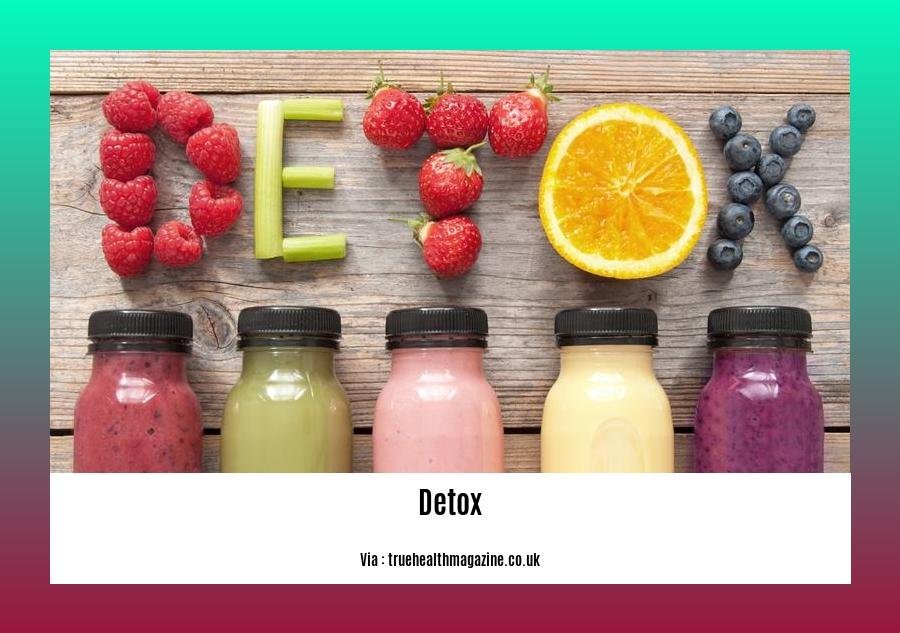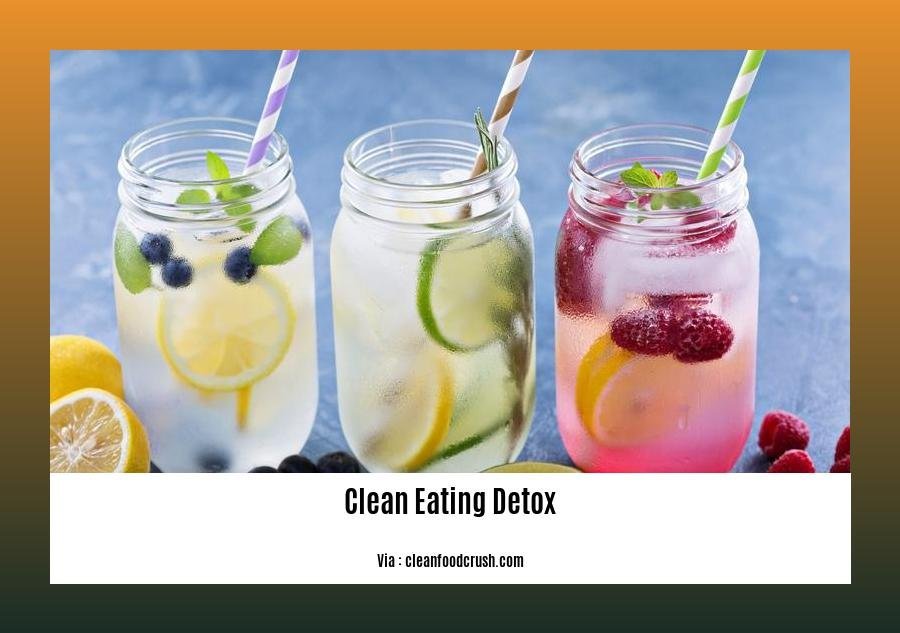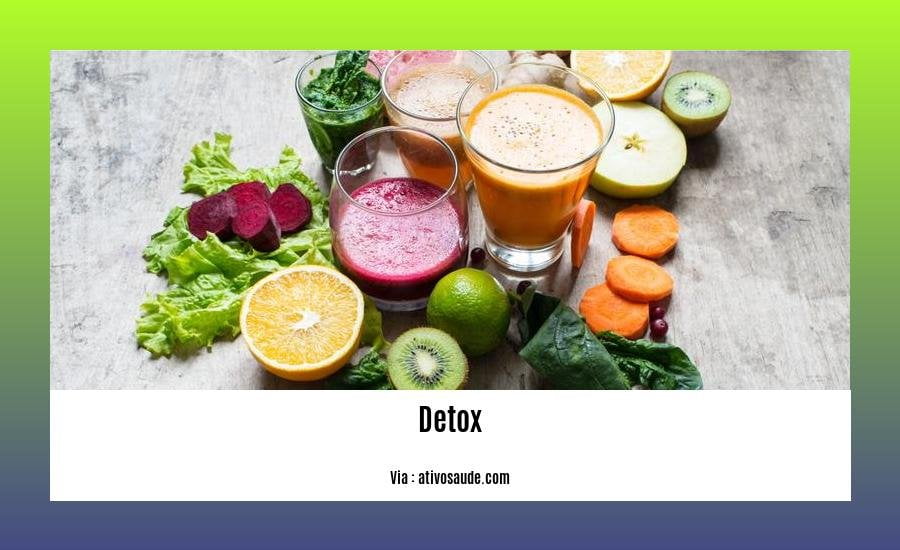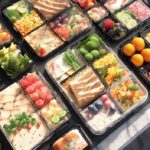Understanding the Benefits of a Clean Eating Detox: A Nutrition Expert’s Perspective
Welcome to a journey that will transform your relationship with food and elevate your overall well-being. In this article, we delve into the world of clean eating detox, a practice that provides numerous benefits for your body and mind. As a nutrition expert with a deep understanding of the importance of nourishing our bodies with wholesome foods, I will guide you through the principles and practicality of this transformative approach. Get ready to discover how eliminating processed foods and embracing nutrient-dense options can revitalize your health and bring about lasting change.
Key Takeaways:
- Following a 14-day clean-eating meal plan can promote weight loss and healthy habits by focusing on whole foods and minimizing processed items.
- The meal plan, designed by Victoria Seaver, M.S., RD, offers a variety of nutritious options and was last updated on September 13, 2023.
- Clean eating is a simple concept that can be made easier to adopt by using a meal plan or finding inspiration from it.
- Meal prepping at the beginning of the week can make the rest of the week more convenient in terms of meal preparation.
- The meal plan includes specific food options for breakfast, morning snacks, and healthy lunch choices.
- Clean Food Crush provides 10 clean eating ways to detox the body, including recommendations to eliminate refined sugar and processed foods.
- Meal planning for clean eating can contribute to weight loss and overall health improvement.
- While a detox diet typically involves fasting and a strict regimen of fruits, vegetables, fruit juices, and water, the body can naturally cleanse itself without following a detox diet.
Clean Eating Detox

Are you looking to revitalize your health and nourish your body from the inside out? If so, a clean eating detox may be just what you need. In this article, we will explore the concept of clean eating detox and its benefits from a nutrition expert’s perspective. So, let’s dive in!
What is Clean Eating Detox?
Clean eating detox is a dietary approach that emphasizes the consumption of whole, nutrient-dense foods while eliminating processed and refined products from your diet. It is a way to reset your body by nourishing it with natural, unprocessed foods and giving it a break from the harmful substances found in processed foods. By removing toxins and additives commonly found in processed foods, clean eating detox allows your body to function optimally and promotes overall wellbeing.
The Benefits of Clean Eating Detox
1. Increased Energy Levels
When you fuel your body with wholesome foods, you provide it with the nutrients it needs to thrive. Clean eating detox can help boost your energy levels by focusing on foods that provide sustained energy, such as fruits, vegetables, whole grains, and lean proteins. By eliminating processed and sugary foods, which can lead to energy crashes, you can maintain a steady level of energy throughout the day.
2. Improved Digestion
Processed foods often contain additives, preservatives, and artificial ingredients that can disrupt your digestive system. By following a clean eating detox, you can give your digestive system a break from these irritants and promote better digestion. Whole foods are rich in fiber, which supports healthy bowel movements and maintains gut health.
3. Enhanced Weight Loss
If weight loss is one of your goals, a clean eating detox can be a game-changer. By prioritizing nutrient-dense foods over calorie-dense processed foods, you can achieve sustainable weight loss. Clean eating focuses on filling your plate with vegetables, lean proteins, and healthy fats, which can help you feel satisfied for longer and reduce unnecessary snacking.
4. Clearer Skin
The saying “you are what you eat” holds true when it comes to your skin. By eliminating processed foods and consuming a clean, nutrient-rich diet, you can promote clearer and healthier skin. Whole foods are packed with vitamins, minerals, and antioxidants that support skin health and repair.
5. Reduced Inflammation
Inflammation is a natural immune response, but chronic inflammation can lead to various health issues. Clean eating detox can help reduce inflammation in the body by eliminating foods that are known to trigger inflammation, such as processed sugars, refined grains, and trans fats. Instead, clean eating focuses on anti-inflammatory foods like leafy greens, berries, fatty fish, and nuts.
How to Implement a Clean Eating Detox
Now that you understand the benefits of clean eating detox, you may be wondering how to get started. Here are some practical steps to incorporate a clean eating detox into your lifestyle:
Meal Planning: Plan your meals ahead of time to ensure you have nutritious options readily available. A meal plan like the “14-Day Clean-Eating Meal Plan: 1,200 Calories” can be a great starting point, providing structure and guidance.
Focus on Whole Foods: Fill your plate with a variety of fruits, vegetables, whole grains, lean proteins, and healthy fats. Aim to consume foods in their most natural and unprocessed form.
Eliminate Processed Foods: Cut out processed and refined foods, such as sugary snacks, processed meats, packaged baked goods, and sugary beverages. Instead, opt for homemade meals and snacks using whole ingredients.
Stay Hydrated: Drink plenty of water throughout the day to support your body’s detoxification processes. You can also incorporate herbal teas and infused water for added flavor.
Read Labels: When grocery shopping, be mindful of reading labels and avoiding foods with added sugars, artificial ingredients, and preservatives. Choose foods with minimal ingredient lists and ingredients that you recognize.
Practice Mindful Eating: Pay attention to your body’s hunger and fullness cues. Slow down while eating, chew your food thoroughly, and savor the flavors. This can help you develop a healthier relationship with food.
In Conclusion
Clean eating detox is a powerful way to nourish your body, promote overall health, and revitalize your wellbeing. By prioritizing whole, nutrient-dense foods and eliminating processed and refined products, you can experience increased energy levels, improved digestion, enhanced weight loss, clearer skin, and reduced inflammation. Remember, a clean eating detox is not a quick fix but rather a sustainable lifestyle approach. So, why not embark on this journey to prioritize your health and make clean, wholesome choices for your body? Start small, make gradual changes, and observe the positive impact it has on your overall wellbeing.
Here are some active internal links for you:
Chinese food facts – Discover fascinating facts about Chinese cuisine that will leave you craving for more knowledge.
Cleaning out colon before colonoscopy – Find out the best ways to prepare your colon for a colonoscopy and ensure a successful procedure.
Daniel fast foods to avoid – Learn about the foods you should avoid during a Daniel fast and maintain a healthy diet during this religious practice.
Remember to click on the highlighted keywords to explore more about these topics!
Principles of a Clean Eating Detox

In the quest for optimal health and wellness, many individuals are turning to clean eating detox as a way to reset their bodies and promote overall wellbeing. As a nutrition expert, I am here to shed light on the principles of a clean eating detox and guide you on your journey towards a healthier lifestyle.
Understanding the Clean Eating Detox
Clean eating detox is centered around consuming whole, nutrient-dense foods while eliminating processed and refined products from your diet. By focusing on natural, unprocessed options, you provide your body with the necessary tools to thrive and function at its best. This lifestyle approach promotes increased energy levels, improved digestion, enhanced weight loss, clearer skin, and reduced inflammation.
The Principles in Action
To implement a clean eating detox effectively, let’s explore some key principles that you can incorporate into your daily routine:
Plan Ahead: Take the time to plan your meals and snacks in advance. This ensures that you have clean options readily available and reduces the temptation to reach for processed foods.
Focus on Whole Foods: Fill your plate with plenty of fruits, vegetables, whole grains, and lean proteins. These foods provide you with vital nutrients and help nourish your body.
Say No to Processed Foods: Minimize your consumption of processed and refined products. These foods are often high in artificial ingredients, unhealthy fats, and added sugars, which can hinder your detoxification process.
Stay Hydrated: Hydration is key to supporting your body’s natural detoxification mechanisms. Aim to drink an adequate amount of water throughout the day to flush out toxins and maintain optimal hydration levels.
Read Labels: Be a mindful shopper and read food labels carefully. Look out for hidden sugars, preservatives, and additives that can undermine your clean eating detox efforts.
Practice Mindful Eating: Slow down and savor each bite. Pay attention to your body’s hunger and fullness cues, and eat without distractions. This fosters a deeper connection with your food and promotes more mindful choices.
Embrace High-quality Protein: Including sources of high-quality protein in your meals supports the detoxification process. Opt for options like lean meats, fish, legumes, tofu, and tempeh to meet your protein needs.
Acknowledge Cravings: In the first few days of clean eating detox, cravings for processed foods may be intense. Understand that this is a normal part of the process, and focus on finding healthier alternatives to satisfy your cravings.
By following these principles, you can embark on a clean eating detox journey that brings about positive changes in your wellbeing. Keep in mind that this lifestyle approach is a sustainable endeavor, promoting long-term health and overall vitality.
Key Takeaways:
- Clean eating detox emphasizes consuming whole, nutrient-dense foods and eliminating processed and refined products from the diet.
- Planning meals ahead of time, focusing on whole foods, eliminating processed foods, staying hydrated, reading labels, and practicing mindful eating are key principles of a clean eating detox.
- Clean eating detox is a sustainable lifestyle approach that promotes overall health and wellbeing.
Sources:
- American Heart Association: Sugar 101
- Harvard Health Publishing: Vegetarian Diet Benefits
Tips for Incorporating Clean Eating Detox into Your Routine
Incorporating a clean eating detox into your routine can help improve your health and overall well-being. By focusing on whole, nutrient-dense foods and eliminating processed and refined products from your diet, you can nourish your body with the nutrients it needs while reducing the risk of chronic diseases. As a nutrition expert, I want to share some practical tips to help you adopt a clean eating detox successfully.
Tip 1: Load Up on Fruits and Vegetables
One of the key principles of clean eating is to include plenty of fruits and vegetables in your diet. These whole foods are packed with essential vitamins, minerals, and fiber that support your overall health and digestion. Aim to incorporate a variety of colorful fruits and vegetables into your meals to ensure you’re getting a wide range of nutrients.
Tip 2: Choose Whole Grain Options
When it comes to grains, opt for whole grains that have been minimally processed. Quinoa, wild rice, and oats are great examples of whole grains that retain their natural nutrients and fiber content. These options are healthier choices compared to refined grains, which have been stripped of their beneficial components.
Tip 3: Be Mindful of Processed Foods
While not all processed foods are necessarily bad, it’s important to be mindful of their content. Many processed foods contain additives, preservatives, and high amounts of sodium and added sugars. Whenever possible, choose whole foods over processed options. By doing so, you’ll be fueling your body with cleaner sources of nutrition.
Tip 4: Limit Added Sugar
Excessive consumption of added sugar can contribute to weight gain and chronic diseases. To reduce your intake, read food labels and choose products with no or low added sugar. The American Heart Association recommends limiting added sugar to around 6 teaspoons per day. By cutting back on added sugar, you’ll be supporting your overall health and well-being.
Tip 5: Incorporate Healthy Fats
Don’t fear fat! Healthy fats are an essential part of a balanced diet. Include sources such as avocados, nuts, seeds, and olive oil in your meals. These fats provide essential nutrients and help keep you feeling full and satisfied. Remember, it’s all about balance and choosing the right types of fats.
Tip 6: Stay Hydrated with Water
Water is essential for overall health and plays a vital role in the detoxification process. Aim to drink at least 8 cups of water per day to stay properly hydrated. Water helps flush out toxins from the body and supports proper digestion. Make it a habit to carry a reusable water bottle with you to ensure you’re getting enough hydration throughout the day.
Tip 7: Practice Mindful Eating
Developing a healthy relationship with food is a crucial aspect of clean eating. Practice mindful eating by paying attention to your body’s hunger and fullness cues. Eat slowly and savor each bite, focusing on the taste, texture, and aroma of your food. By being present in the moment, you can prevent overeating and truly enjoy the nourishment your meals provide.
Incorporating these tips into your daily routine can help you transition to a clean eating detox successfully. Remember to be patient with yourself and focus on progress rather than perfection. Clean eating is a sustainable lifestyle approach that promotes overall health and well-being.
Key Takeaways:
– Load up on a variety of fruits and vegetables to get essential vitamins, minerals, and fiber.
– Choose whole grains like quinoa, wild rice, and oats over refined grains for better nutrition.
– Be mindful of processed foods and opt for whole, unprocessed options whenever possible.
– Limit your intake of added sugars to support weight management and reduce the risk of chronic diseases.
– Incorporate healthy fats, such as avocados, nuts, seeds, and olive oil, for essential nutrients and satiety.
– Stay hydrated with water to support proper digestion and detoxification.
– Practice mindful eating by paying attention to your body’s cues and enjoying your food in the present moment.
Sources:
– 7 Tips for Clean Eating
– 24 Clean Eating Tips to Lose Weight and Feel Great – Healthline
Potential Pitfalls and Considerations of Clean Eating Detox
Clean eating detox diets have gained popularity as a way to eliminate toxins from the body and promote weight loss. However, it’s important to approach these diets with caution and consider the potential pitfalls and considerations before starting one. As a nutrition expert, I want to provide you with a balanced perspective on the topic.
Calorie Restriction and Nutrient Deficiencies
One of the main concerns with clean eating detox diets is the severe restriction of calorie intake. While some may see rapid weight loss as a benefit, it’s important to understand that such drastic calorie reduction can lead to nutrient deficiencies. The body requires a variety of nutrients to function properly, and when these nutrients are not adequately consumed, it can have negative effects on overall health and well-being.
Negative Impact on Metabolism and Muscle Mass
Severely limiting calorie intake through a clean eating detox diet can also have a negative impact on metabolism and muscle mass. When the body does not receive enough calories for its daily energy needs, it may slow down its metabolic rate as a survival mechanism. Additionally, the body may start breaking down muscle tissue for energy, leading to muscle loss.
Ketosis and Potential Side Effects
Some clean eating detox diets involve cutting out carbohydrates altogether, which can lead to a state of ketosis. While ketosis is a natural metabolic process, it can result in side effects such as fatigue, headaches, weakness, and dizziness. It’s important to understand that not everyone experiences these side effects, but they can occur for some individuals during the initial phase of a clean eating detox diet.
Need for Personalized Guidance and Support
Before embarking on any type of detox diet, it’s essential to consider your individual health needs and goals. Consulting with a healthcare professional or registered dietitian can provide personalized guidance and support. They can help assess whether a clean eating detox diet is suitable for you and provide recommendations to ensure that your nutritional needs are met while avoiding potential pitfalls.
Key Takeaways:
– Clean eating detox diets may involve severe calorie restriction, which can lead to nutrient deficiencies and negative impacts on metabolism and muscle mass.
– Ketosis, a state that can occur when carbohydrates are restricted, may result in side effects such as fatigue, headaches, weakness, and dizziness.
– It is essential to consult a healthcare professional or registered dietitian before starting a clean eating detox diet to receive personalized guidance and support.
Sources:
– NetDoctor: “The 7-Day Detox diet: benefits, concerns, and potential side-effects”
– Medical News Today: “Detox diets: Good or bad for our health?”
FAQ
Q1: What is clean eating?
A1: Clean eating is a dietary approach that focuses on consuming whole foods that are minimally processed and as close to their natural state as possible. It involves avoiding processed foods and prioritizing fresh fruits, vegetables, whole grains, lean proteins, and healthy fats.
Q2: What are the benefits of a clean eating detox?
A2: A clean eating detox can provide several benefits. By eliminating processed foods and focusing on whole, nutrient-dense options, it can help improve overall health, promote weight loss, boost energy levels, enhance digestion, strengthen the immune system, and reduce the risk of chronic diseases.
Q3: How long should a clean eating detox last?
A3: The duration of a clean eating detox can vary depending on individual goals and preferences. It can range from a few days to a couple of weeks. It is important to listen to your body and consult with a healthcare professional or registered dietitian for personalized guidance.
Q4: Can I eat meat during a clean eating detox?
A4: While clean eating encourages the consumption of plant-based foods, including fruits and vegetables, it does not strictly eliminate meat. However, it is recommended to choose lean, unprocessed sources of meat and prioritize plant-based proteins such as legumes, tofu, and tempeh.
Q5: What should I do if I experience intense cravings during a clean eating detox?
A5: It is common to experience cravings for processed foods, especially in the initial stages of a clean eating detox. To manage cravings, try incorporating more whole, flavorful foods into your meals, stay hydrated, and engage in mindful eating practices. Finding healthy alternatives to satisfy cravings can also be helpful.
- Georgia Platform: A Southern Strategy, 1850s - March 31, 2025
- How many weeks is 40 days: Quick Conversion Guide for Accurate Results - March 31, 2025
- How many feet is 300 meters? 984 Feet: Understand Length Conversions Easily - March 31, 2025
















